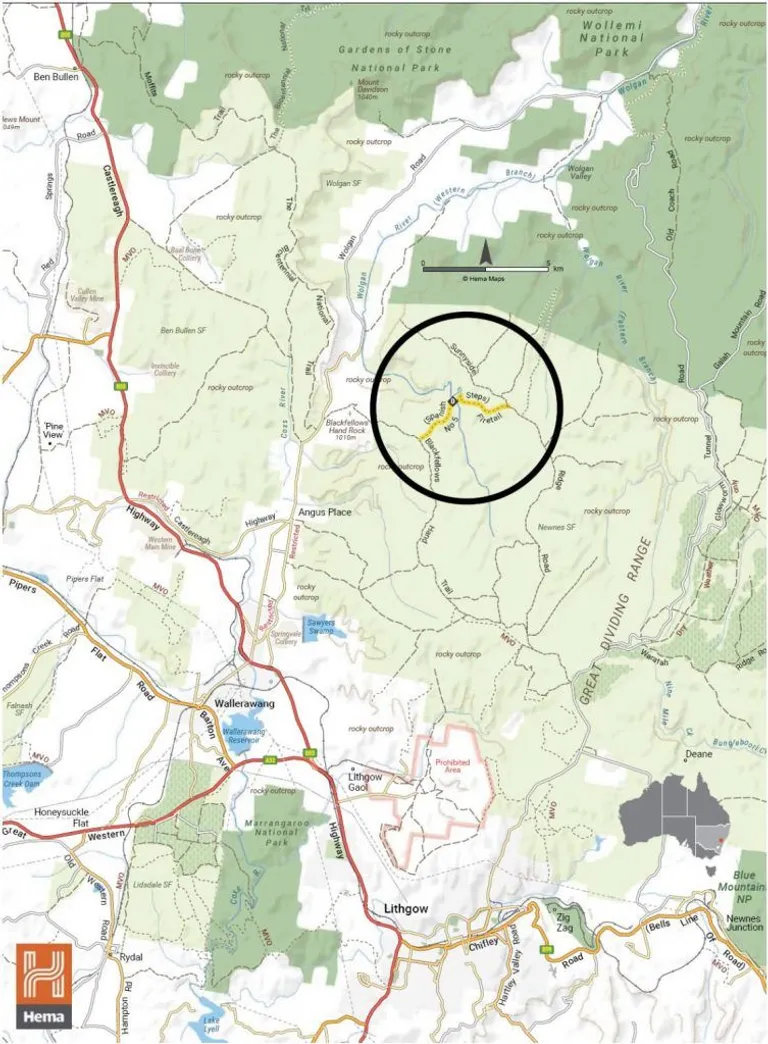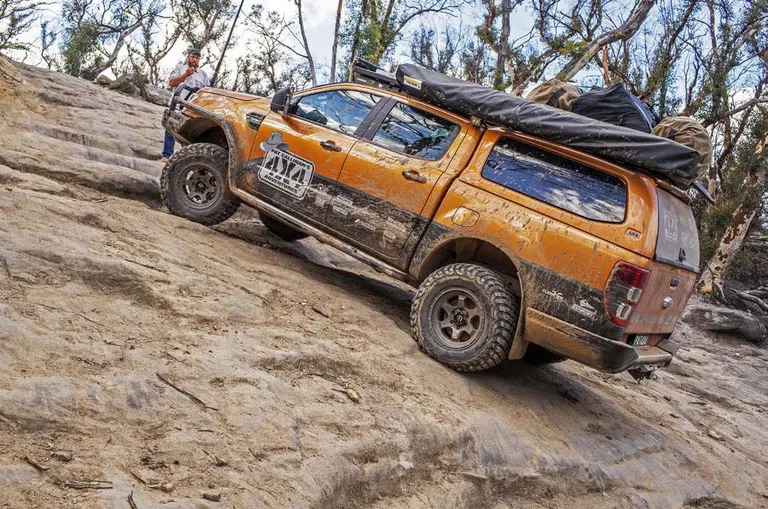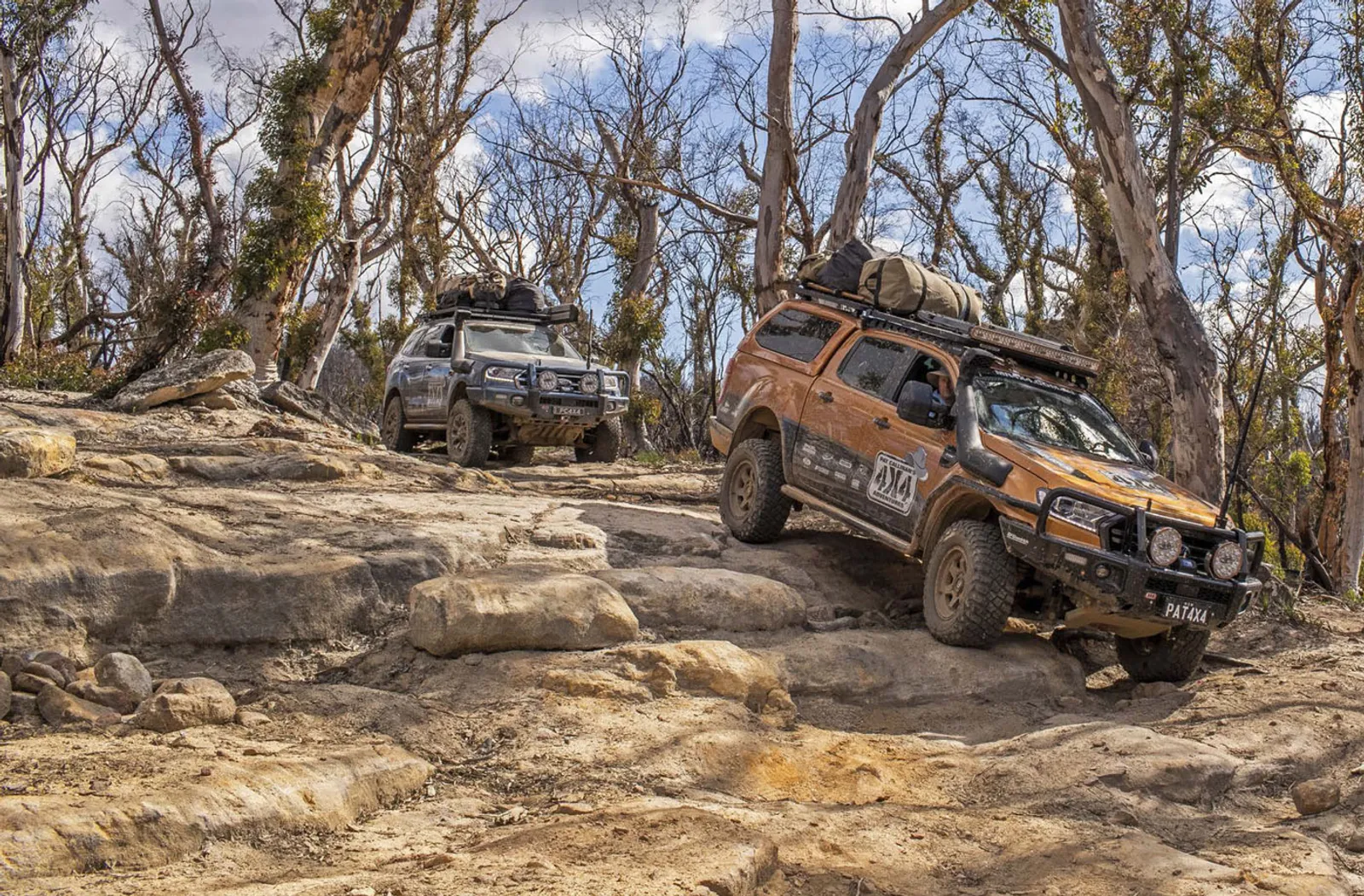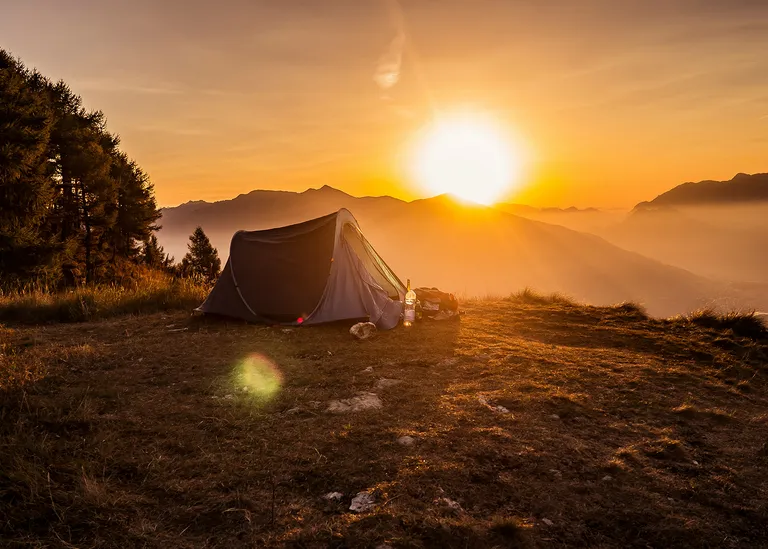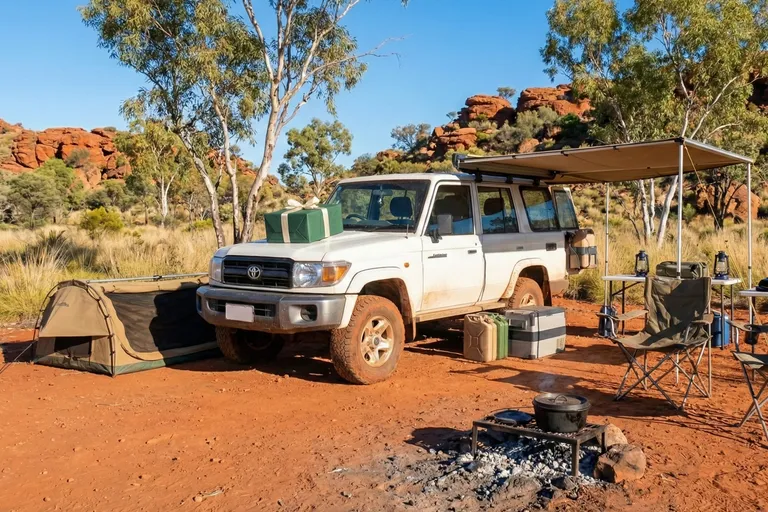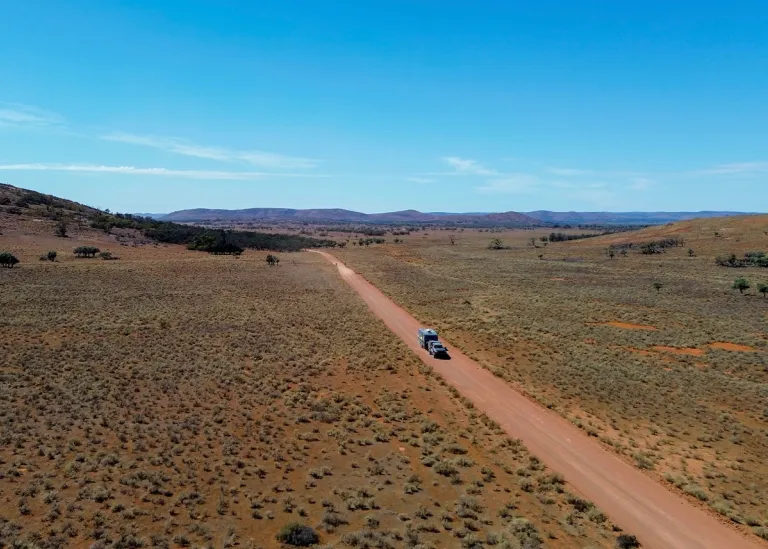We bring you this preview courtesy of Pat Callinan and MR4X4. CLICK HERE for instructions on how Club 4X4 policyholders can gain access to MR4X4 content.
It’s a baptism of fire for Pat Callinan’s Fords as he tackles one of NSW’s toughest tracks; the Spanish Steps.
It’s a track that I’ve known about for more than 20 years, that I’ve never actually driven. I’ve walked it before, but that walk has led me to the conclusion to avoid it at all costs. Like most of us, I’m more of a ‘Wheel on the weekend and drive to work on a Monday’ kinda guy. And you can’t exactly do that if you’ve smashed your CVs to smithereens or belted your diff pumpkins to a pulp. I should also mention that my prior vehicles were running 32-inch rubber and a mere 22mm suspension lift – not exactly six-inch lifted GQ Patrols…
So with the dawning of a new season of television, and vehicles sporting 33-inch rubber and a 50mm lift, the Spanish Steps were deemed worth another look. We needed to end our Hill End TV episode with a bang, and the Mt Airly track was closed for pest control. The next closest hardcore track was the Spanish Steps in the Newnes State Forest near Lithgow, NSW. It was at the urging of young Bill Callinan that we do the track. Last time he was there in the wet, he had to winch his way out of the valley. As he was through first, he had to slingshot winch a further six vehicles out, some of which were twin-locked with 35-inch rubber. We were fortunate in that we had a dry track so, despite the smaller tyres, we would have a serious traction advantage.
The track is named after the historic Spanish Steps of Rome but, in actual fact, the sign refers to No.5 Trail. It seems State Forests don’t go for all that fancy Euro stuff… The NSW/ACT Four Wheel Drive Association has actively lobbied to have the State Forest managed track remain open, which is a great result for four-wheel drivers. The association classes this track as a Double Black Diamond rating. Ask any snow skier what that means, and it’s essentially ‘drive it, but you might die!’.
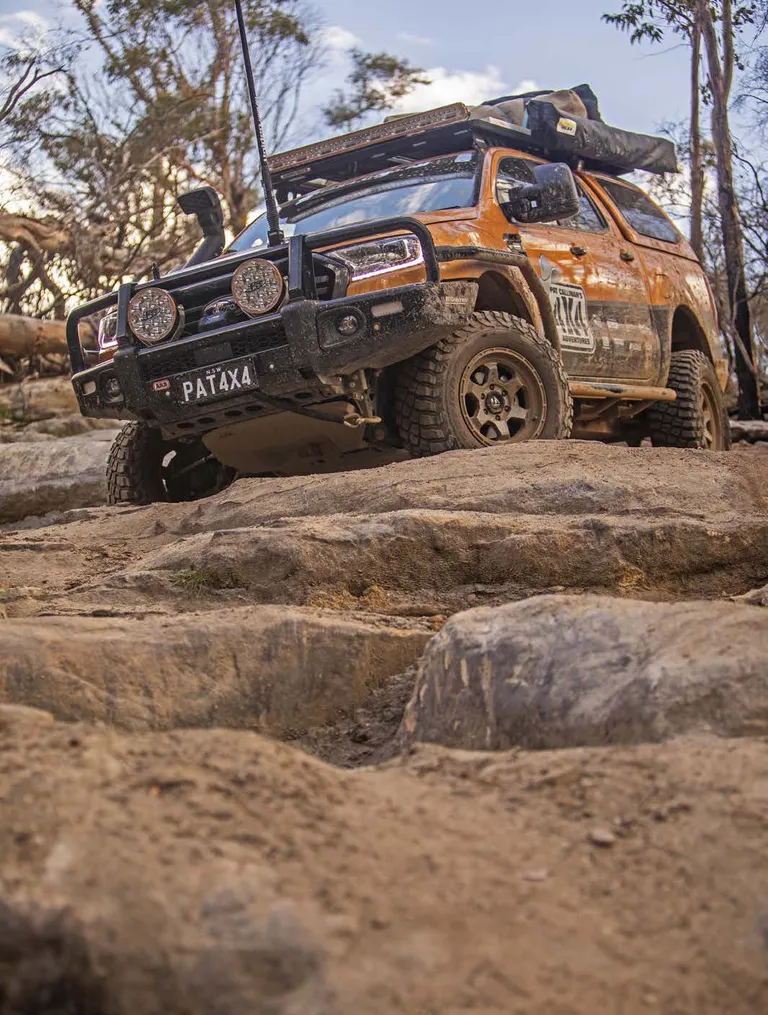
The main way to access the track is off the side of the Sunnyside Ridge road. The recommended route is from east to west. The track meanders down a big rock garden, made up of giant blocks of sandstone. From the bottom looking up, it looks like a death trap. But with a calm eye, you can start to pick out your route, one rock shelf at a time. And that really is the key to getting down. Slowly, steadily and with a guide. I guided Wes Whitworth down in the Everest, and he avoided the rocks beautifully.
I, however, went first unguided in my Ranger, and missed almost all the rocks, except one. The ‘Steps’ punished my ARB underbody protection, the price being one layer of paint. In essence, I got away scot-free.
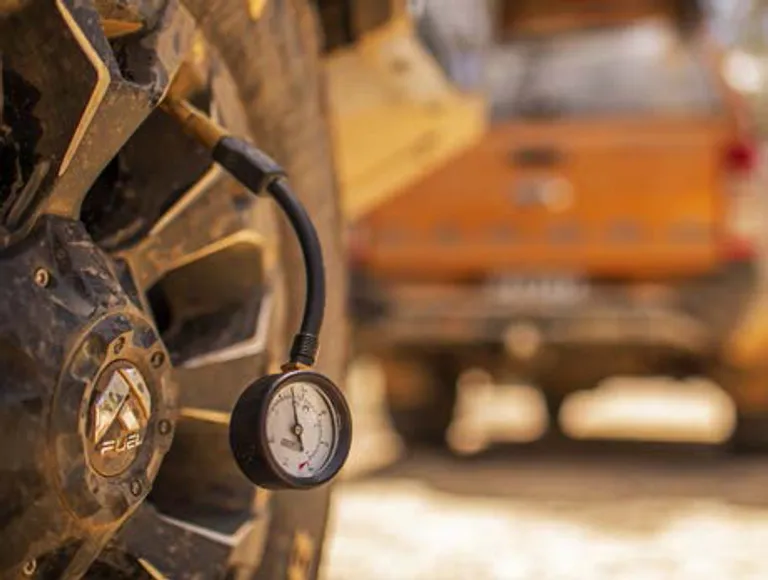
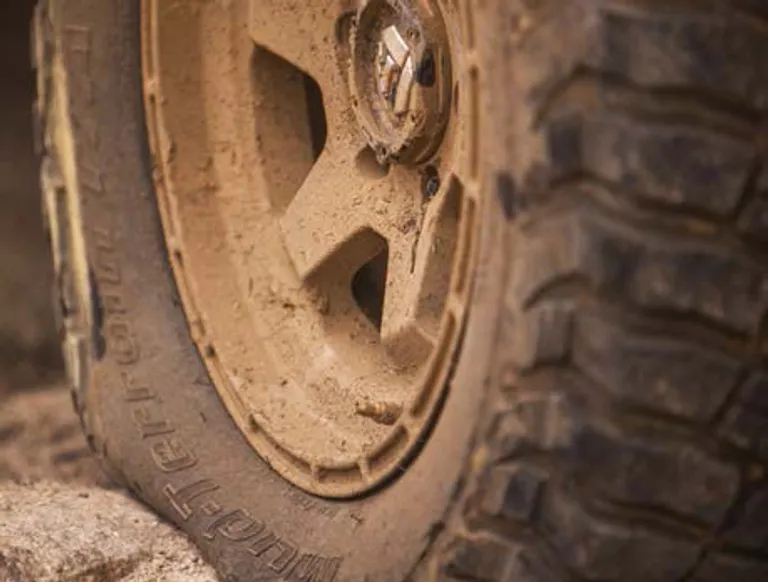
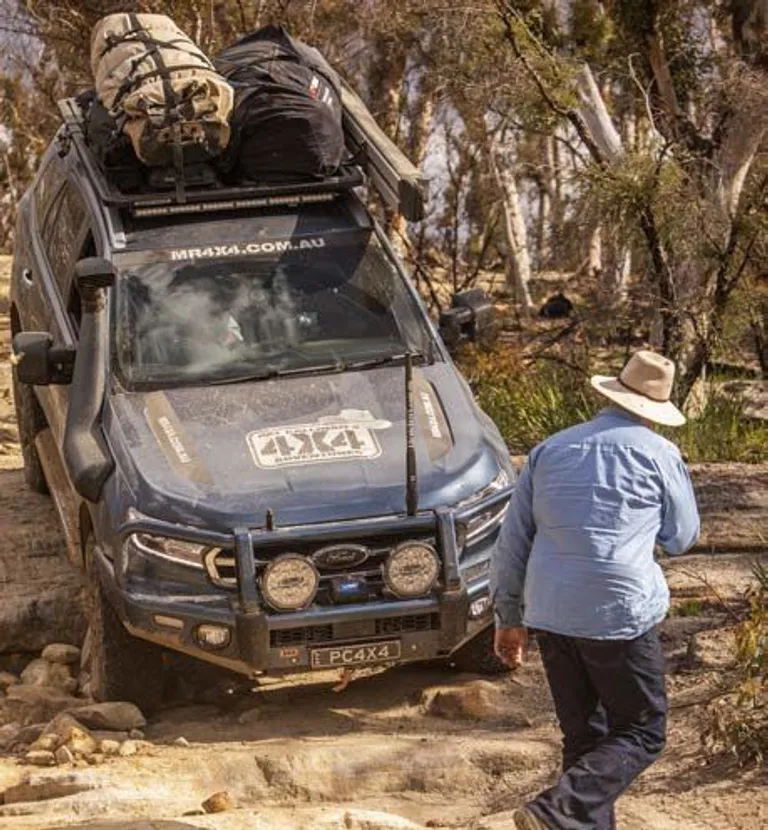
On entering the valley floor, you criss-cross a small creek a few times. The forest here has been scorched by the 2020 fires, and the result is a much clearer view of the surrounding escarpment. It’s quite a short but stunning drive before you’re presented with a few big wombat holes on your outbound ascent. It’s a great opportunity for a photo-opp, as your vehicle will almost undoubtedly pop a wheel or two on the way through. With the lockers engaged and traction control ticking into gear, our vehicles kept their forward motion easily.
Yet the best (or worst!) is still to come. The drive out is as steep as it is terrifying. And if the angle of ascent isn’t enough for you, there are plenty of opportunities to lose traction. The first is right at the bottom of the rock face. Do you hook hard right and pray? Or do you back and fill, and line it up nice and straight. That’s what I chose to do. There are other options too. You could go hard left and attempt to put your two left wheels on the dirt, but while minimising the climb, you’re subjecting your rig to a side slope. And nobody likes side slopes when the traction evaporates. Then there’s the hard right line, which is simply steeper than them all, and reserved for the more comp-truck spec vehicles in your convoy. It’s for those who like a challenge (and perhaps dislike their truck).
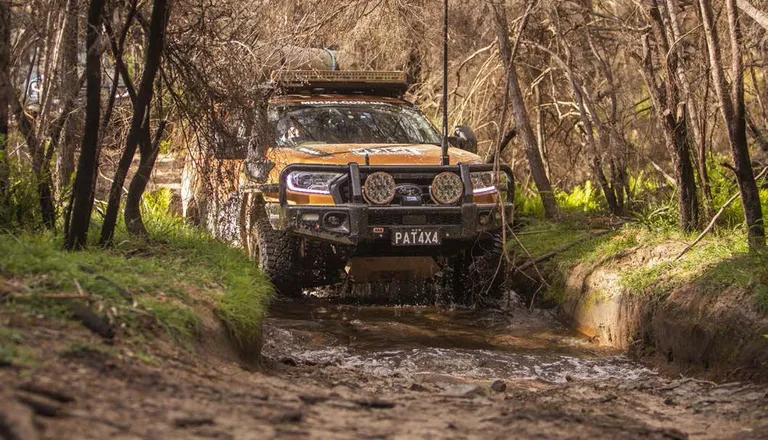
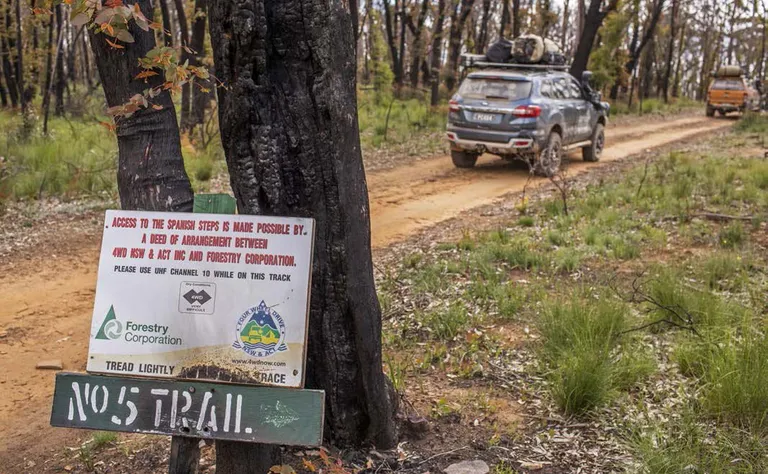
Yet even while trying to take the most sensible line, you’ll find that sedimentary sandstone doesn’t always play a straight bat. Halfway up the steepest pinch, your tyres will be asked to leap up not one, but two rocky steps. The catch? Your front wheels and back wheels will collide with these steps at the exact same time. I know mine did in the Ranger. Despite some hefty throttle, the Ranger leapt forward, but not enough to conquer the step. It was a heart-stopping moment. With Wes as my guide, I gingerly reversed by a metre or so, while Wes packed some rocks for the front tyres. On the second attempt, the Ranger scrambled up the Steps, conquering the hardest part of the hill. It was a euphoric moment, tackling one of the hardest tracks in the state relatively unscathed.
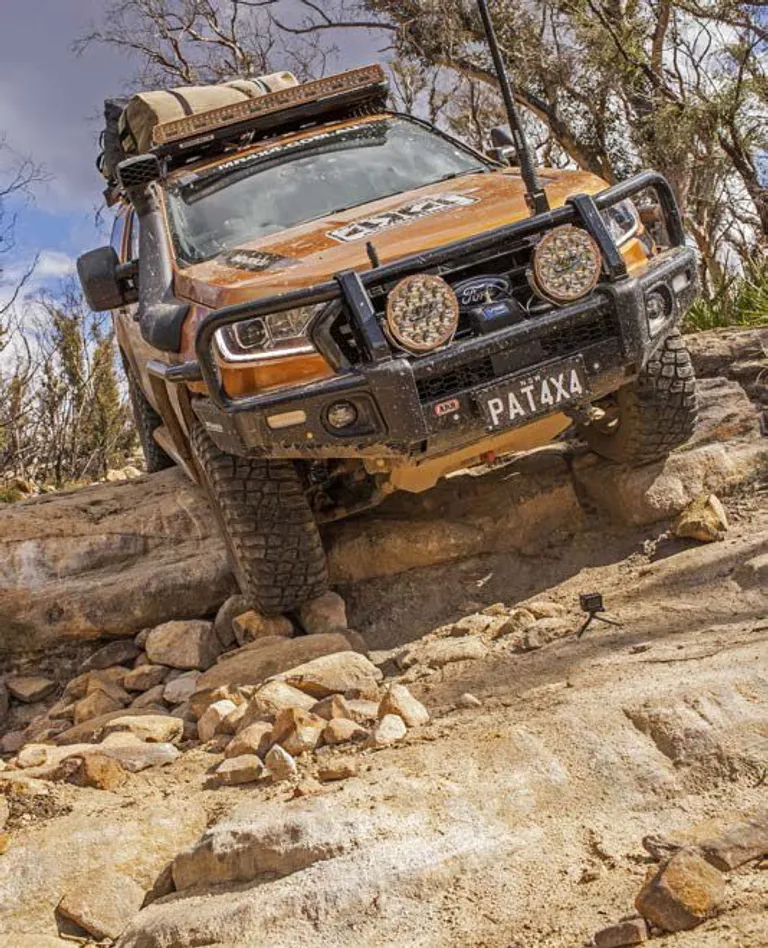
The Ford Everest was up next, and I played guide this time for Wes. At the base of the hill, the shorter-wheelbased Ford cocked a wheel that would make a peeing pooch proud. Inside, I grimaced for Wes, wondering with that much air under the tyres, would he make it up without a winch?
I needn’t have worried. With a steady application of throttle, he picked his way up in low range and conquered the first part of the hill. It was almost too easy. He then paused to assess his line, and give me a chance to guide his wheels in the right direction. After agreeing on the right line, it was a point and shoot and yell affair. Wes pointed, I barked over the Uniden, and the Everest hit the bullseye, making the entire rock face look like its playground. The shorter wheelbase of the Everest meant that it was never challenged by the ‘two rockshelves at once’ predicament, as suffered by the longer Ranger. The Everest simply climbed and climbed and conquered, thanks in no small part by some great driving by Wes. Prior to the drive, I was confident that the Ranger would do this, but not the Everest. Afterwards, I was simply blown away by the ease at which it all happened. No winches, no straps and very little track building. We had conquered the worst of it.
After that, there are a few more noteworthy obstacles, but they’re not in the same league as the earlier parts of this track. They’re simply an enjoyable drive, where judicious driving is required, but they certainly won’t punish you like the earlier stages.
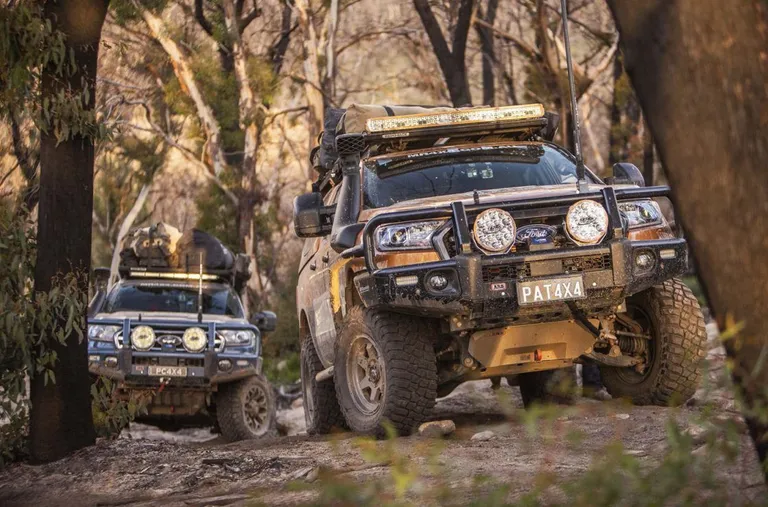
How do I get there?
If you would like to have a crack at the Spanish Steps, the track itself remains unnamed on many maps. In fact, on the HEMA 4WD App it’s marked as MVO. It’s not though. For your reference, it’s the northernmost track that runs between Sunnyside Ridge Road and Blackfellows Hand Trail. Enter from the eastern side so as not to create a traffic jam on the single trail below.
For first-timers, I’d recommend initially trying it in dry weather. Allow two to four hours to drive the track, and carry recovery gear including a winch… and go with at least one other vehicle. This is not a beginner’s track. Please only attempt it with a few years of rock driving up your sleeve, and with all-terrain tyres and at least 50mm of suspension lift.
